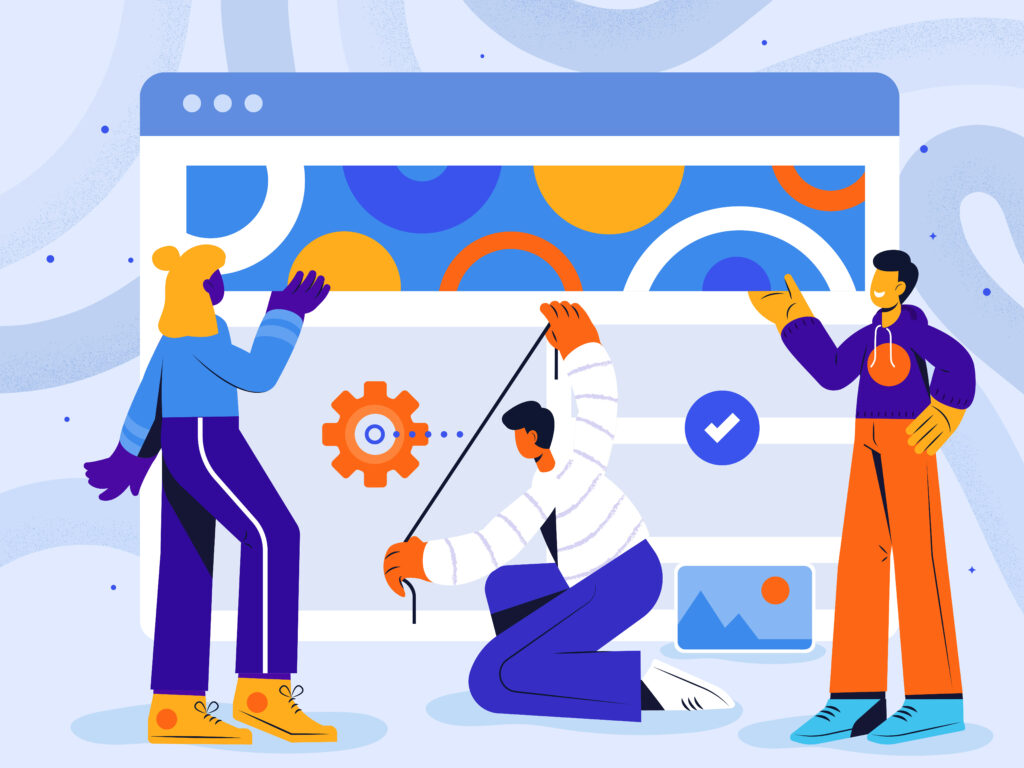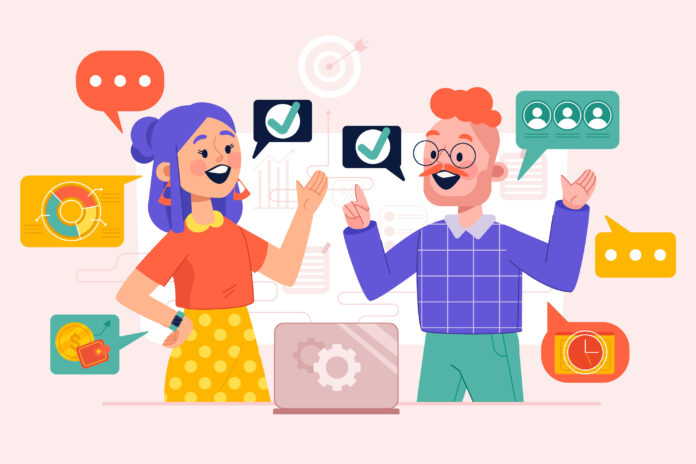Keeping customers happy and loyal is the holy grail for businesses looking to thrive in today’s hyper-competitive market. With customer acquisition costs skyrocketing, savvy companies are turning to Customer Retention Software to supercharge their retention strategies. This game-changing technology equips businesses with a powerful arsenal of tools to nurture long-lasting relationships with their valued customers, driving sustainable growth and profitability.
What is Customer Retention?
Customer retention is a metric that measures a company’s ability to keep its customers over time. It reflects customer loyalty and is critical for businesses as it can predict customer satisfaction, repurchase behavior, and emotional ties to a brand.
Why is Customer Retention Important?
Customer retention is critical for several reasons:
- Cost-effective: It’s significantly cheaper to retain existing customers than acquire new ones. Studies suggest it can be 5-7 times more expensive!
- Boosts Revenue: Happy customers spend more! Retained customers are more likely to make repeat purchases and try new offerings, increasing your revenue stream.
- Loyalty Leads to Advocacy: Satisfied customers become brand advocates. They’re more likely to recommend your business to friends and family, generating free promotion.
- Improves Efficiency: By focusing on retention, you free up resources spent on constant customer acquisition, allowing for better internal optimization.
- Valuable Feedback: Loyal customers provide valuable feedback that helps you improve your products and services, keeping you ahead of the curve.
What is Customer Retention Software?
Customer retention software is a type of tool designed to help businesses keep track of their customer relationships and interactions across various channels, such as email, social media, and websites.
Customer retention software uses customer intelligence and automation to analyze customer data, identify trends, and provide insights into customer behavior and preferences. This information can be used to tailor marketing and support efforts to individual customers, improving customer satisfaction and reducing churn rates.
Key Features of Customer Retention Software
Customer retention software goes beyond fancy buzzwords. Here’s a breakdown of its core features that directly translate to business benefits:
- Customer Segmentation & Targeting: Group customers based on behavior, demographics, or purchase history. This allows you to tailor marketing campaigns and promotions for maximum impact.
- Customer Engagement Automation: Schedule automated emails, loyalty program updates, and win-back campaigns. Free up your team’s time for personalized interactions.
- Omnichannel Communication: Facilitate seamless communication across channels (email, social media, live chat) for a unified customer experience.
- Feedback & Survey Tools: Gather valuable customer feedback through surveys and polls to understand their needs and concerns.
- Customer Relationship Management (CRM) Integration: Syncs customer data with your CRM system for a 360-degree view of your customer base.
- Reporting & Analytics: Tracks key metrics like customer churn rate and lifetime value (CLTV), allowing you to measure the success of your retention efforts.
- Personalization Engine: Recommends relevant products or services based on individual customer behavior and preferences.
- Loyalty Program Management: Manages and tracks loyalty program points, rewards, and redemption activities, keeping customers engaged.
- Predictive Churn Analytics: Identifies customers at risk of churning based on historical data and behavioral patterns. Proactive intervention can prevent churn.
- A/B Testing: Test different marketing messages, offers, and website layouts to optimize customer engagement and conversion rates.
Benefits of Using Customer Retention Software
Here’s why customer retention software is an investment worth making.
- Increased Customer Lifetime Value and Loyalty
- Improved Customer Satisfaction
- Reduced Marketing Costs for Acquisition
- Enhanced Brand Reputation
- Increased Revenue from Repeat Purchases
- Better Understanding of Customer Behavior
- Efficient Resource Allocation
- Boosted Retention Rates
- Increased Customer Engagement
- Improved Customer Relationship Management
- Enhanced Marketing and Sales Campaigns
- Streamlined Customer Onboarding
- Predictable Customer Churn
- Exceptional Customer Support
How Customer Retention Software Improves Customer Loyalty?
Customer retention software fosters customer loyalty by transforming interactions from generic to personalized. It analyzes data to understand customer needs and preferences, allowing you to tailor communication, rewards, and recommendations. This personalized touch fosters a sense of value and connection, leading to increased satisfaction and brand loyalty.
How Customer Retention Software Identifies At-Risk Customers?
Customer retention software acts like a customer health monitor. It analyzes various data points like purchase history, support ticket volume, and engagement levels. By spotting unusual patterns (e.g., sudden drop in purchases, increased support interactions), it can identify customers who might be at risk of churning and allows you to intervene before they unsubscribe or defect.
The Role of AI and Machine Learning in Customer Retention Software
AI and machine learning supercharge customer retention software by:
- Predicting Churn: Identifying customers at risk before they even think about leaving.
- Automating Interventions: Sending personalized offers or reaching out proactively to keep customers happy.
- Hyper-Segmentation: Targeting customers with laser focus for maximum impact.
- Reading Sentiment: Understanding customer feelings to address concerns before they escalate.
- Personalization at Scale: Creating custom experiences for each customer, no matter how many you have.
Choosing the Right Customer Retention Software for Your Business
To choose the right customer retention software for your business, consider the following steps:
- Understand Your Customers’ Needs and Wants: Identify the areas where your customers are most likely to churn and focus on improving those aspects. This will help you tailor your retention strategy to meet their specific needs.
- Define Your Business Goals: Determine what you want to achieve with your customer retention software. Are you looking to increase customer loyalty, reduce churn, or improve customer satisfaction? This will help you choose the right tool for your specific needs.
- Evaluate the Features: Look for software that offers features such as customer profiling, personalized experiences, and automation. Ensure the tool can integrate with your existing systems and provide real-time analytics.
- Assess the Cost: Consider the cost of the software and whether it fits within your budget. Some tools may offer free trials or tiered pricing plans to help you find the best fit.
- Read Reviews and Case Studies: Research the software by reading reviews from other customers and case studies that demonstrate its effectiveness in similar industries or use cases.
- Test the Software: Try out the software with a small group of customers or a pilot project to gauge its effectiveness and ease of use.
- Monitor and Adjust: Continuously monitor the performance of the software and adjust your strategy as needed to ensure you are meeting your business goals.
By following these steps, you can choose the right customer retention software for your business and improve customer loyalty and retention rates.

Top 10 Customer Retention Software in 2024
Here’s a curated list of the top 10 customer retention software options to help you find the perfect fit for your business needs:
-
Zendesk:
- Zendesk is a powerful customer experience platform that enables businesses to provide personalized support, gather feedback, and drive customer loyalty through omnichannel capabilities, AI-powered automation, and real-time analytics.
- Key Features: Omnichannel support, customer segmentation, AI-powered chatbots, customer satisfaction surveys, real-time analytics, and 1,500+ integrations.
- Pros: Comprehensive customer experience management, seamless omnichannel support, advanced AI and automation capabilities.
- Cons: Can be more expensive for smaller businesses.
-
Salesforce:
- Salesforce is a leading customer relationship management (CRM) platform that helps businesses streamline customer interactions, personalize experiences, and drive customer retention through its suite of sales, marketing, and service tools.
- Key Features: Account and contact management, lead and opportunity tracking, marketing automation, customer service, and advanced analytics.
- Pros: Robust CRM capabilities, extensive ecosystem of apps and integrations, scalable for businesses of all sizes.
- Cons: Steep learning curve, can be complex for smaller teams.
-
HubSpot:
- HubSpot is an all-in-one customer retention software that combines marketing, sales, and customer service tools to help businesses attract, engage, and retain customers through personalized experiences and data-driven insights.
- Key Features: Marketing automation, lead management, customer service, and reporting and analytics.
- Pros: Intuitive user interface, comprehensive suite of tools, free CRM available.
- Cons: Can be expensive for larger enterprises, some features may overlap with other tools.
-
Intercom:
- Intercom is a customer messaging platform that helps businesses engage with customers through personalized, conversational experiences across multiple channels, including chat, email, and in-app messaging.
- Key Features: Conversational marketing, customer support, product tours, and customer data management.
- Pros: Intuitive conversational interface, seamless omnichannel experience, advanced customer data and segmentation.
- Cons: Pricing can be high for smaller businesses, limited integration options.
-
Gainsight:
- Gainsight is a customer success platform that helps businesses reduce churn, increase customer lifetime value, and drive growth through proactive customer engagement, data-driven insights, and automated workflows.
- Key Features: Customer health scoring, customer journey mapping, customer success automation, and advanced analytics.
- Pros: Comprehensive customer success management, predictive churn analytics, and customizable workflows.
- Cons: Primarily focused on enterprise-level businesses, can be complex for smaller teams.
-
Qualtrics:
- Qualtrics is an experience management platform that helps businesses collect and analyze customer feedback, understand customer sentiment, and take action to improve customer retention and loyalty.
- Key Features: Customer experience management, employee experience management, brand experience management, and advanced analytics.
- Pros: Robust customer feedback and sentiment analysis, customizable surveys, and integration with other business tools.
- Cons: Can be overkill for smaller businesses with simpler needs.
-
Freshworks:
- Freshworks is a suite of customer engagement and support tools that help businesses deliver personalized experiences, automate customer interactions, and improve customer retention.
- Key Features: Customer relationship management, customer service, marketing automation, and AI-powered chatbots.
- Pros: Affordable pricing, user-friendly interface, and seamless integration between different Freshworks products.
- Cons: Limited customization options compared to enterprise-level solutions.
-
Mixpanel:
- Mixpanel is a customer analytics platform that helps businesses understand user behavior, identify retention drivers, and optimize customer experiences to reduce churn and increase loyalty.
- Key Features: User behavior tracking, cohort analysis, funnel analysis, and predictive analytics.
- Pros: Powerful user behavior analytics, easy-to-use interface, and integration with a wide range of tools.
- Cons: Primarily focused on product analytics, may require additional tools for comprehensive customer retention management.
-
Zoho:
- Zoho is a suite of business software solutions, including a customer relationship management (CRM) platform, that helps businesses manage customer interactions, automate workflows, and improve customer retention.
- Key Features: CRM, marketing automation, customer service, and business intelligence.
- Pros: Affordable pricing, comprehensive suite of tools, and easy integration between Zoho products.
- Cons: May lack some advanced features compared to enterprise-level solutions.
-
Appcues:
- Appcues is a user onboarding and product adoption platform that helps businesses create personalized in-app experiences, improve user engagement, and reduce churn.
- Key Features: User onboarding, product tours, feature announcements, and user behavior analytics.
- Pros: Intuitive no-code interface, seamless in-app experiences, and integration with a variety of tools.
- Cons: Primarily focused on product adoption, may require additional tools for comprehensive customer retention management.
Please note that these software solutions and their features are subject to change, and it’s always recommended to thoroughly research and evaluate each option based on your specific organizational needs and requirements.

How to Ensure the ROI of Your Customer Retention Software?
Investing in customer retention software is a smart move, but as with any investment, ensuring a healthy return is key. It’s crucial to follow a strategic approach and leverage the tool’s capabilities effectively. Here are some key steps to maximize the ROI:
- Set clear goals and metrics for retention efforts.
- Integrate data sources for comprehensive customer view.
- Leverage customer analytics to identify at-risk customers.
- Personalize experiences across touchpoints.
- Automate retention campaigns like loyalty programs and win-backs.
- Capture and act on customer feedback promptly.
- Continuously monitor and optimize strategies based on data.
Finding the Perfect Fit with StaQ.ai:
Choosing the right customer retention software is crucial for maximizing ROI. StaQ.ai simplifies the process. This innovative SaaS marketplace curates the best business software solutions, including a wide range of customer retention platforms.
Here’s why StaQ.ai is your one-stop shop for success:
- Expert Matching: Tell StaQ.ai your specific business needs and goals, and their intelligent platform will match you with the perfect customer retention software solution.
- Comparison Made Easy: Compare features, pricing, and user reviews from a variety of top-rated vendors, all in one place.
- Free Consultations: Get personalized advice from StaQ.ai’s software specialists to ensure you make an informed decision.
Stop settling for generic solutions. Invest in the right customer retention software and unlock the full potential of your business.





